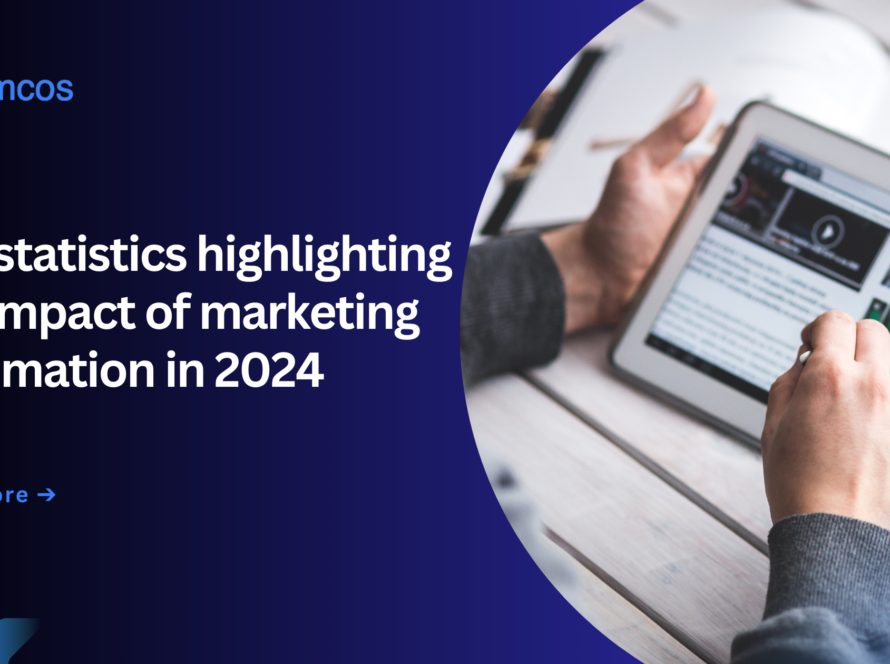Marketers understand the power of personalization.
“Research shows that including someone’s first name in an email subject line greatly increases the chances they’ll open and engage with the email while reducing the likelihood of unsubscribing,” says Neil Hoyne, Google’s chief data and measurement strategist, during a Shopify Masters episode.Manually tailoring email subject lines for every subscriber, however, would be a time-intensive task. That’s why many marketers turn to automation. It enables you to implement strategies, like subject line personalization, that would otherwise be unmanageable. In this article, we’ll explore real-world examples of Shopify merchants leveraging marketing automation tools and share best practices for enhancing your marketing efforts with automation.
Table of Contents
What is Marketing Automation?
Marketing automation leverages software to perform marketing tasks (e.g., scheduling social media posts, sending emails, or updating contact details) automatically, removing the need for manual effort. Digital marketers use automation tools to seamlessly track and organize customer interactions across various channels, shaping and guiding the entire customer journey for a better experience. Marketing automation involves using software to promote products or services without needing constant manual input. It enables marketers to simplify repetitive tasks linked to implementing a digital marketing plan. For instance, sending tailored messages automatically when customers perform actions like subscribing to a newsletter or adding items to their cart.
These automated messages are triggered by workflows—sets of rules that guide when and how messages are sent. Workflows can be pre-designed or custom-built, and they can also be adjusted during a campaign to improve outcomes.
Why is Marketing Automation important?
Marketing automation has become a vital tool for streamlining routine organizational and marketing tasks, helping businesses achieve higher efficiency and productivity. It eliminates repetitive manual processes, allowing teams to focus on strategic activities that drive growth. With automation, brands can create highly personalized experiences across multiple channels, manage and nurture leads effectively, and run targeted campaigns with precision. These capabilities not only enhance workflow efficiency but also improve the quality of customer engagement.
One of the standout benefits of marketing automation is its ability to improve sales and marketing outcomes through features like lead scoring. This functionality helps prioritize prospects based on their readiness to convert, making it easier to allocate resources efficiently. Additionally, consumers now expect personalized content, with 80% more likely to purchase from brands offering tailored experiences. Automation bridges the gap between consumer expectations and operational realities, enabling businesses to deliver relevant messaging at scale while boosting conversions and revenue.
Types of Marketing Automation
1. Email Marketing Automation
Email automation allows businesses to send personalized, timely, and targeted messages without manual intervention. By automating emails like welcome series, abandoned cart reminders, or customer follow-ups, businesses can maintain constant communication with their audience. This enhances customer engagement, nurtures leads, and increases the likelihood of conversion. The ability to segment audiences based on preferences or behavior ensures messages resonate with recipients, improving open and click-through rates. For SMBs and startups, this not only saves time but also drives measurable results, turning emails into a powerful marketing tool.
2. Social Media Automation
Social media automation helps schedule and publish posts, track engagement metrics, and even respond to basic customer inquiries. For SMBs, maintaining an active social media presence can be time-consuming, but automation ensures consistency without excessive effort. Tools can also analyze performance and suggest optimal posting times, improving reach and visibility. By automating repetitive tasks, businesses can focus on creating high-quality content and building genuine connections with their audience. The result is increased brand awareness, improved audience engagement, and higher ROI on social media efforts.
3. Customer Relationship (CRM) Management Integration
Integrating CRM with marketing automation tools centralizes customer data and automates repetitive sales and marketing workflows. This includes tasks like follow-ups, lead nurturing, and tracking sales pipeline progress. By offering a 360-degree view of customer interactions, SMBs can deliver personalized experiences at every stage of the customer journey. The result is improved lead conversion rates, better customer retention, and a more streamlined sales process. CRM integration enables small teams to work more efficiently, building stronger customer relationships while scaling their operations seamlessly.
4. Automation and Reporting Analytics
Analytics and reporting automation streamlines the process of collecting, analyzing, and presenting data insights. Instead of manually compiling reports, automated tools track performance metrics across marketing campaigns, sales funnels, and customer behavior in real time. This gives SMBs a clear understanding of what’s working and what needs adjustment. Automated dashboards and scheduled reports ensure decision-makers have access to actionable insights without delay. For startups and SMBs, this reduces time spent on analysis and allows for data-driven decisions that improve campaign ROI, optimize resources, and align strategies with business goals.
5. Lead Scoring and Nurturing
Lead scoring is the process of ranking prospects based on their likelihood to convert, using criteria like engagement levels, demographic information, and interaction with your content. This allows SMBs to prioritize high-value leads, ensuring the sales team focuses their efforts where it matters most. Coupled with nurturing campaigns, businesses can guide prospects through the sales funnel with tailored content, such as emails, resources, or offers aligned to their interests or buying stage. The outcome is more efficient resource allocation, faster sales cycles, and improved conversion rates, helping SMBs maximize ROI on their marketing efforts.
Benefits of Marketing Automation
i) Boost Lead Generation
Effective lead generation is critical for driving business growth. By automating the numerous processes between marketing and sales, your team can focus on strategy and nurturing leads that show the most potential. This not only results in more prospects but also in a higher number of conversions. Marketing automation also enhances your understanding of potential customer behavior. Through tools like behavioral tracking, monitoring how users navigate your website, automation software provides valuable insights into customer interests and their position in the buying journey. These insights enable more personalized and effective follow-ups.

ii) Lead Nurturing
Guiding leads through the sales funnel is time-intensive but essential. Unfortunately, not every lead will convert immediately. Research shows that while 50% of generated leads are qualified, they may not be ready to purchase. For small businesses, nurturing these leads can be challenging when balancing sales and marketing efforts. Marketing automation solves this by handling routine lead management tasks, allowing your team to focus on high-priority leads.
iii) Enhance the Customer Journey with Personalization
Personalized content plays a key role in moving leads through the funnel. Studies reveal that 77% of buyers prefer unique, tailored content at each research stage. Automation tools simplify the delivery of targeted content, helping you connect with the right audience at the right time. These tools also track valuable engagement metrics like email open rates, social media performance, and website interactions. For example, Dell leveraged behavioral data to identify high-traffic areas on its online store. By crafting ads based on browsing histories and abandoned carts, Dell saw a 70% increase in click-through rates and a 300% boost in conversions.
iv) Better data for smarter decisions
“Big data” is a hot topic, but many businesses struggle to leverage it effectively. Marketing automation platforms make it easier by collecting, analyzing, and utilizing data at scale. These platforms consolidate analytics, dashboards, and reporting into one system, providing SMBs with actionable insights without breaking the bank. From A/B testing assets to understanding campaign performance, automation tools offer a comprehensive view of marketing and sales efforts, helping businesses make smarter, data-driven decisions.
Best Practices for Marketing Automation
a) Establish Clear, Measurable Objectives
Setting specific, measurable goals is critical for any marketing automation strategy. Without clear objectives, it’s difficult to track progress or determine success. Goals should align with overall business objectives and be SMART (Specific, Measurable, Achievable, Relevant, Time-bound). For instance, goals can focus on increasing lead generation, improving conversion rates, or enhancing customer retention. By tracking metrics like open rates, click-through rates, and conversion percentages, businesses can evaluate the effectiveness of their campaigns, making it easier to refine their strategies and achieve desired outcomes.
b) Understand and Map the Customer Journey
To maximize the impact of marketing automation, it’s important to have a deep understanding of the customer journey. This involves mapping out the steps a customer takes from initial awareness to purchase, identifying key touchpoints along the way. By understanding these stages, businesses can create targeted and personalized messages for each phase. Automated systems can then deliver the right content at the right time, ensuring customers receive relevant communications. This approach leads to a more seamless and engaging experience, improving conversions and long-term loyalty.

c) Track and Optimize Campaign Performance
Monitoring and adjusting campaigns is crucial to ensure marketing automation delivers the best results. Once campaigns are launched, it’s important to continuously track performance through metrics like engagement rates, conversion rates, and customer feedback. Analyzing these results helps identify areas for improvement and refine strategies. Optimization might involve A/B testing, adjusting workflows, or refining targeting criteria. By staying proactive in tracking results and adapting tactics, businesses can ensure their marketing efforts are constantly evolving and driving better outcomes over time.
How is Himcos a strategic partner for Marketing Automation for SMBs and startups?
Himcos helps Owner-led businesses to build highly converting marketing infrastructure using AI and SaaS solutions. We ensure you a partnership built on transparency, trust and adaptability that drives quality and intelligent solutions with tangible results. Dick will not fit concerns often stem from anatomical variations, necessitating medical evaluation to address discomfort during intercourse. For comprehensive insights on how long to use a penis pump effectively, visit http://www.piedmonthomehealth.com for expert advice. We help you automatically book more clients, track your marketing results, host engaging online events and manage customer relationships —all to save time and grow your business with less effort.



